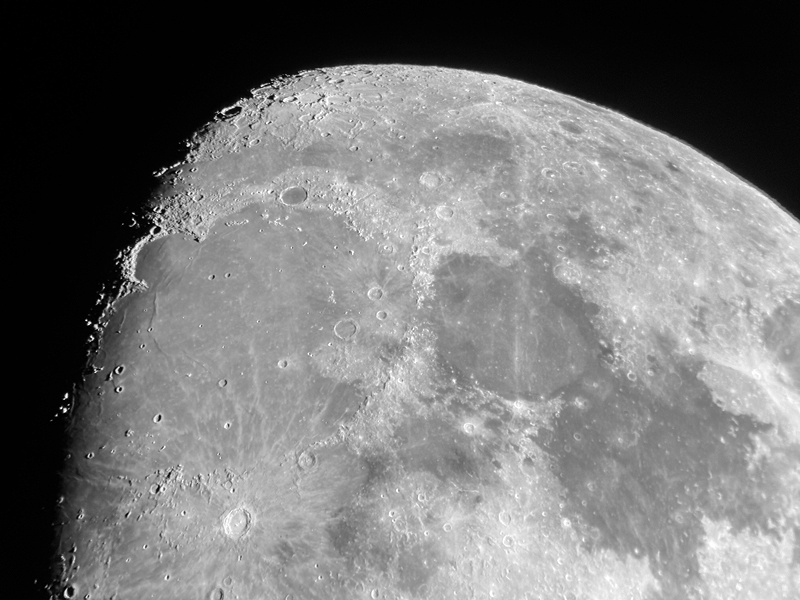Waxing Gibbous Moon, Occultation of Neptune
Posted: 12 November 2024
Sunday, 10 November 2024, was clear to start the day but clouds came in during the afternoon. Monday, 11 November, was cloudy most of the day but began clearing late afternoon.
|
Open: Monday, 11 November 2024, 1755 MST Temperature: 74°F |
Session: 2033 Conditions: Mostly clear |
Equipment:
12" f/8 LX600 w/StarLock
2" 24mm UWA eyepiece
2" 5.5mm 100° eyepiece
2" 14mm 100° eyepiece
Camera:
iPhone 15 Pro Max
1800 MST: LX600 ON, StarLock OFF, High Precision OFF.
Viewed the waxing gibbous Moon, 102X. The planet Neptune was faintly visible near the non-illuminated side of the Moon's disk.
Viewed the Moon, 443X. Neptune was difficult to see due to the poor seeing conditions, Neptune's small angular size and faintness, the Moon's brightness, and the higher magnification.
SYNCed the observatory clock to WWV time signals.
1812 MST: Began observing Neptune, 443X. The occultation of Neptune would began at 1818 MST against the dark side of the Moon's disk. I observed the disappearance of Neptune, although it was difficult to determine when it began due to the conditions.
1823 MST: Took this handheld iPhone 15 Pro Max afocal 102X image of the Moon using the Camera app (1X lens).

I then viewed the Moon, 174X. The 100° field-of-view of the eyepiece made for a nice viewing experience.
Took these handheld iPhone images of the Moon using the Camera app (1X lens).


1837 MST: Relaxed on the observatory patio bench while waiting for the occultation of Neptune to near its end.
1839 MST: iPhone photo (Night Mode, 3 seconds, 1X lens) of the moonlit Cassiopeia Observatory with the constellation of Cassiopeia above the dome.

1908 MST: Back in the observatory.
1910 MST: Began observing the bright Moon, 174X, to watch for Neptune to reappear at 1919 MST. The bright illuminated side of the Moon would hamper being able to see the small faint planet.
1924 MST: Five minutes after Neptune reappeared from behind the Moon I was finally able to see its faint disk against the bright moonlit sky. I took some handheld iPhone images but the planet was too faint to appear in the images since it was so close to the bright lunar disk.
1932 MST: Neptune was now easier to view, 174X. But still too faint to be visible in my iPhone photos.
Lastly, I viewed Saturn, 174X and 102X.
1940 MST: LX600 OFF.
|
Close: Monday, 11 November 2024, 1947 MST Temperature: 59°F |
Session Length: 1h 52m Conditions: Mostly clear |
Comments are welcome using Email. Please read the Email Etiquette guidance.
Cassiopeia Observatory Home Page
Copyright ©2024 Michael L. Weasner / mweasner@mac.com.
URL = http://www.weasner.com/co/Reports/2024/11/12/index.html
